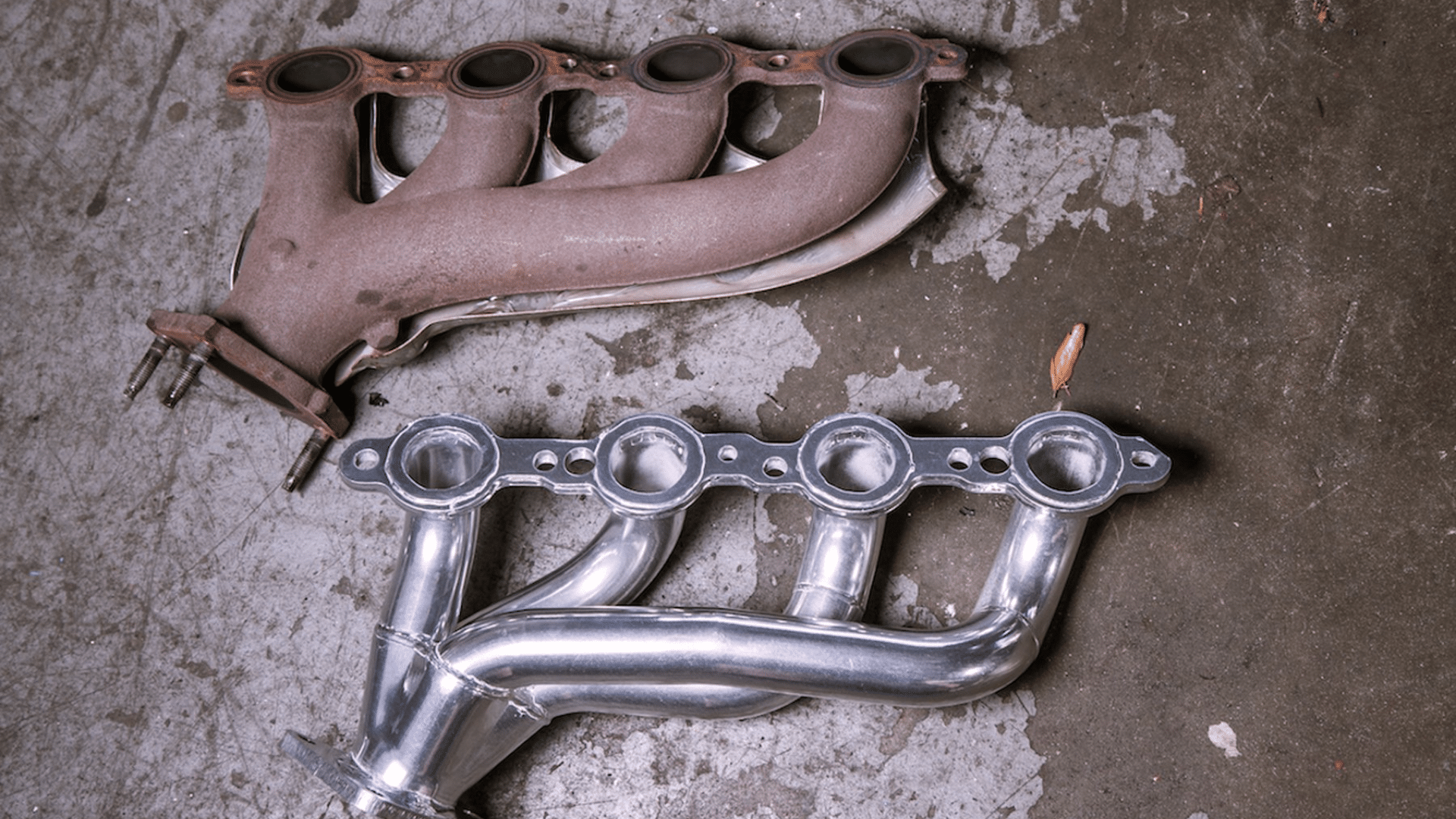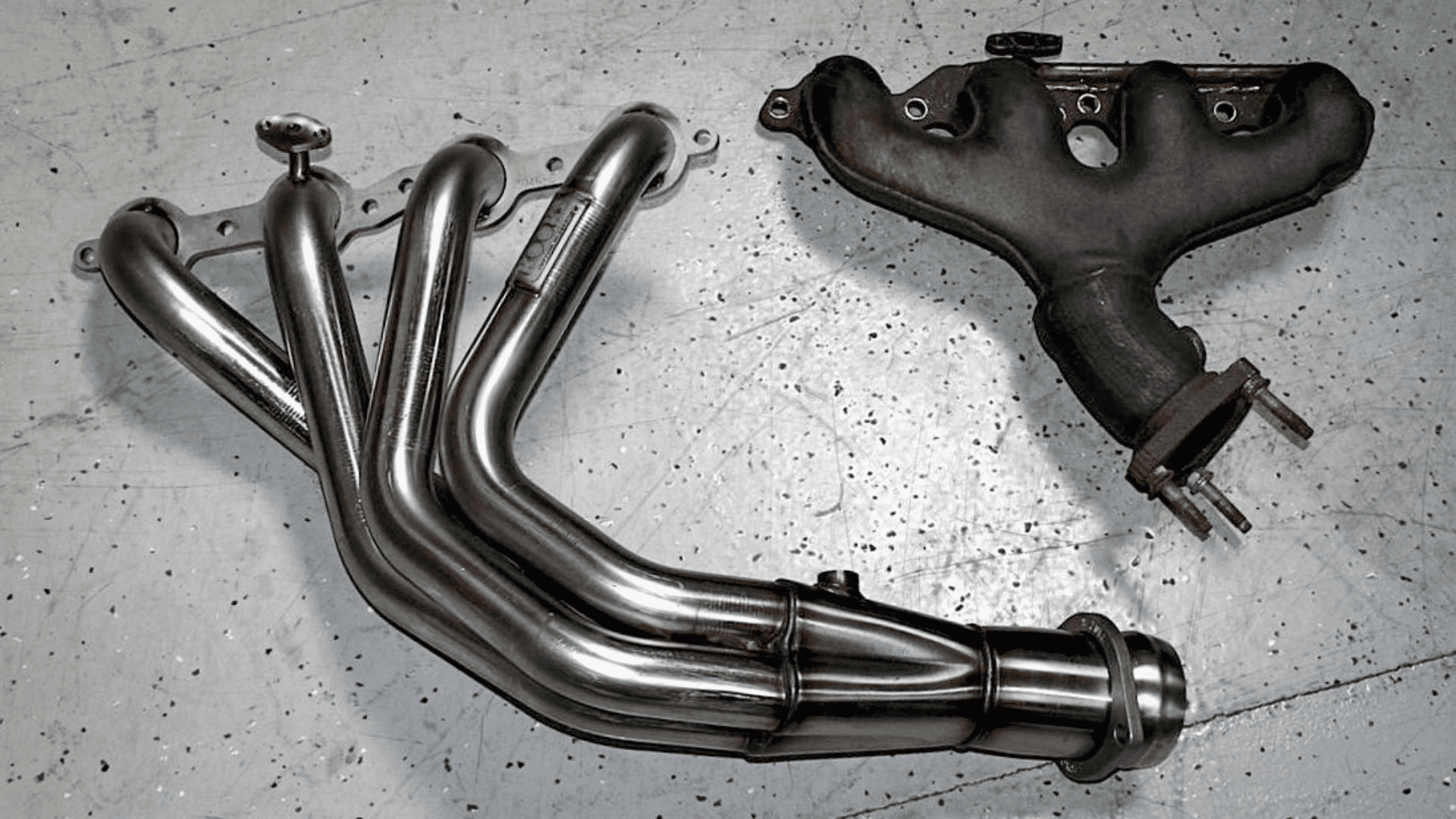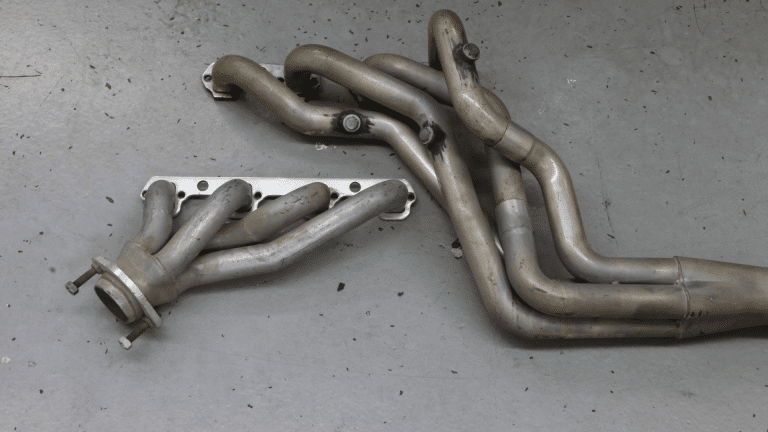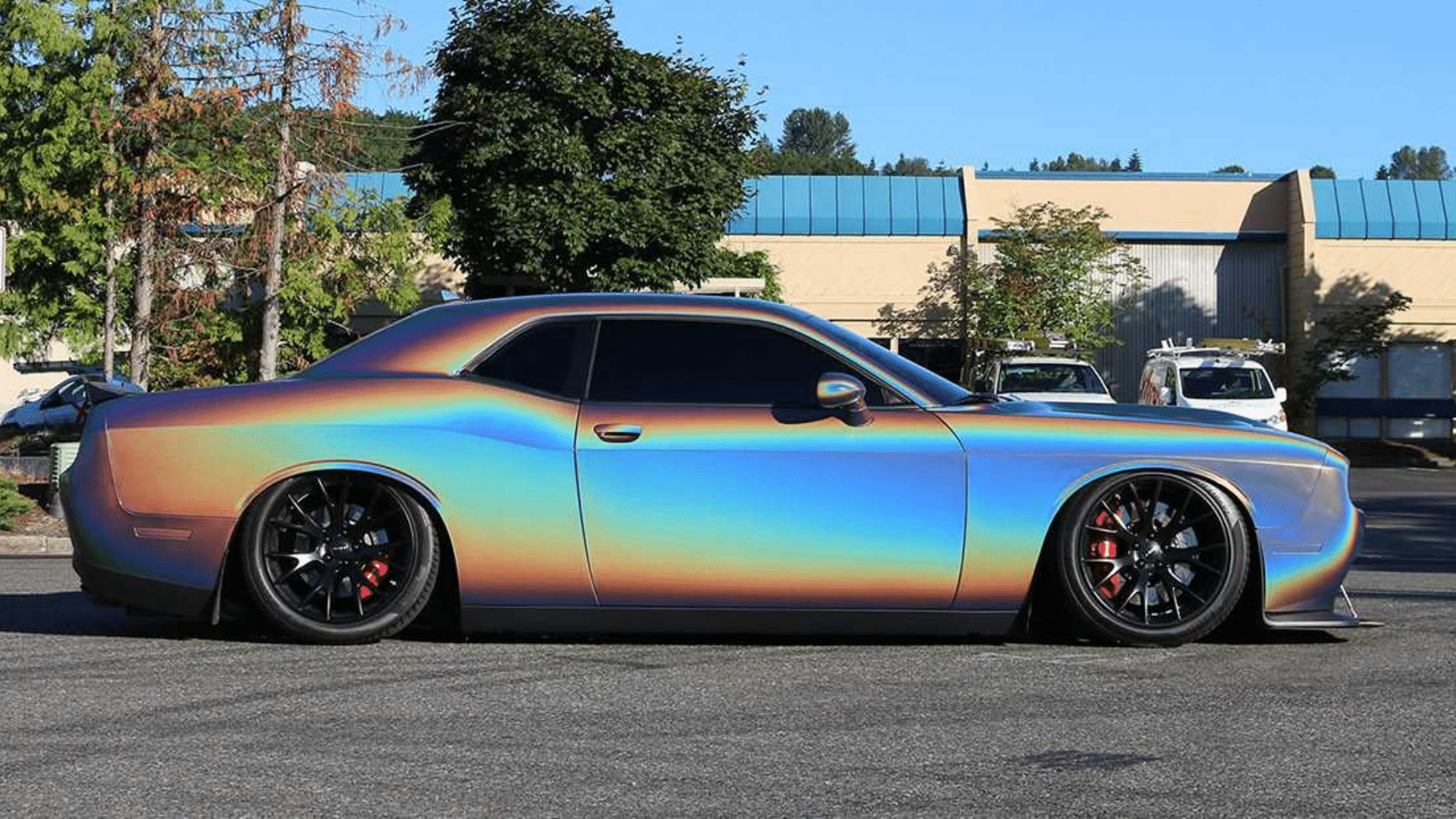When I started learning about exhaust upgrades, I quickly realized headers play a big role in how a car performs and sounds.
If you’re looking to improve airflow, add power, or change your engine’s tone, headers are often the first place to start. But here’s where it gets tricky: you’ll find two main types: long tube headers and short tube headers.
In this article, I’ll walk you through the key differences so you know what to expect. You’ll see:
- How each type changes horsepower and torque
- What they do for sound and emissions
- The installation issues you might face
- Which one fits better for daily use or racing
By the end, you’ll have a clear idea of how these headers compare, and you’ll feel more confident choosing the right setup for your car.
How Header Length Affects Engine Performance?
The length of a header’s primary tubes has a direct impact on exhaust flow, torque curves, and horsepower delivery. Long tube headers keep exhaust pulses separated for a greater distance before merging into a collector.
This extended path improves scavenging, reduces back pressure, and enhances airflow efficiency at higher RPMs, leading to stronger top-end horsepower.
Such characteristics make them popular in racing and high-performance builds where sustained speed matters.
Short tube headers, by contrast, allow exhaust gases to merge sooner, which increases exhaust velocity at lower engine speeds.
This enhances low-end torque and throttle response for daily driving, towing, and stop-and-go.
Understanding how tube length influences performance helps in choosing the right header for your driving needs and goals.
What Do Long Tube Headers Do?

Long tube headers are performance exhaust components built with long, equal-length primary tubes that connect each cylinder’s exhaust port to a common collector farther down the exhaust system.
Extending the distance exhaust gases travel improves exhaust scavenging, pulling out spent gases and drawing in a fresh air-fuel mixture.
This is especially evident at higher RPMs, where efficient airflow boosts power.
Important features of long tube headers are:
- Improved exhaust flow: Longer tubes let exhaust gases exit more smoothly, reducing backpressure and helping the engine breathe better.
- Enhanced torque at higher speeds: While low-end response may dip, long tubes shine when the engine is pushed hard, especially at wide-open throttle.
- Performance tuning potential: They pair well with other upgrades like cams, intakes, and custom tuning for even greater gains.
- Better for racing setups: Their design favors sustained high RPMs, making them a go-to choice for drag racing and track use.
- Less ideal for emissions compliance: In many places, they can interfere with factory catalytic converters, which may affect street legality.
What Do Short Tube Headers Do?

Short tube headers are exhaust components designed with shorter primary tubes that connect each cylinder’s exhaust port to a collector placed closer to the engine.
Shorter tubes let exhaust gases merge faster, boosting low- to mid-range power. This improves throttle response and everyday drivability.
While they don’t produce the same top-end gains as long tubes, they are easier to install and often work better with factory emissions equipment. Important features of short tube headers are:
- Better low-RPM response: Shorter tubes boost torque and throttle feel in the low to mid range, making them ideal for daily driving.
- Easier installation: Their compact design allows them to fit more easily in tight engine bays, often without major modifications.
- More emissions-friendly: They usually connect to stock catalytic converters, making them more likely to stay street legal.
- Good balance of performance and practicality: While not as aggressive as long tubes, they still offer a noticeable improvement over stock manifolds.
- Cost-effective upgrade: Short tubes are typically less expensive than long tubes and save money on labor.
Long Tube vs Short Tube Headers: The Core Differences
Choosing between long and short tube headers comes down to power, sound, and ease of installation. Long tubes add high-RPM power and a louder tone, while short tubes give better low-RPM response and everyday use.
| Features | Long Tube Headers | Short Tube Headers |
|---|---|---|
| Design | Extended primary tubes that run farther down the exhaust system | Compact primary tubes ending closer to the engine block |
| Power Focus | Stronger performance at high RPM, ideal for racing | Better low-to-mid RPM torque, great for street driving |
| Installation | More complex, may require component relocation | Easier, typically a direct bolt-on |
| Sound | Deep, aggressive exhaust note | Milder tone, closer to factory sound |
| Cost | Higher due to material and labor needs | More budget-friendly |
| Best For | Track builds, performance enthusiasts | Daily drivers, budget-conscious upgrades |
Performance Impact of Long Tube Headers
Long tube headers are engineered to optimize exhaust flow by allowing exhaust pulses to travel through longer, equal-length tubes before merging into a collector.
This design helps exhaust gases exit more efficiently, reducing back pressure and improving scavenging, so the engine breathes better at high RPMs, boosting performance for racing and spirited driving.
Since the exhaust pulses stay separated longer, the engine can pull in a fresher air-fuel charge, improving combustion efficiency.
Advantages:
- High-end performance: Substantial horsepower gains above the mid-RPM range make them excellent for engines tuned for speed.
- Track benefits: Strong, high-speed power delivery makes them ideal for drag racing, circuit racing, and other motorsports.
- Sound character: Their deeper, throatier tone adds an aggressive personality to the vehicle’s exhaust note.
Performance Impact of Short Tube Headers
Short tube headers, often called shorty headers, are designed with compact primary tubes that end closer to the engine, making them easier to fit in tight engine bays.
Their shorter length enables exhaust gases to merge sooner, boosting low-end torque and responsiveness. This suits everyday driving, where quick throttle response and strong low-speed pull matter more than top horsepower.
They also typically work with the stock catalytic converters, helping maintain emissions compliance and simplifying installation.
Advantages:
- Low-end torque boost: Ideal for stop-and-go traffic, towing, and street use where acceleration from a standstill matters most.
- Direct fitment: Often bolts directly to factory exhaust components without major modifications.
- Cost savings: Lower purchase price and reduced labor costs make them budget-friendly.
Installation Considerations
Installation plays a big role when deciding between long and short tube headers. Space, emissions rules, and labor all factor into the choice.
Long tube headers usually need more room and may require moving parts like steering components or crossmembers, making them better for vehicles with extra space.
Short tubes often keep the factory catalytic converter in place, which helps meet emissions laws for street use.
Labor is another point; long tubes take more time and cost more to install, while short tubes are quicker and more budget-friendly.
Clearance can also be an issue, as long tubes may scrape on lowered cars. Heat is something to manage with both, though long tubes often need extra shielding.
Finally, short tubes can sometimes be handled by experienced DIYers, but long tubes usually require professional tools and skills to fit correctly.
Cost Comparison and Value for Money

When evaluating long tube vs short tube headers, consider all expenses, not just the purchase price. Installation, supporting modifications, and long-term performance affect value.
| Cost Factor | Long Tube Headers | Short Tube Headers |
|---|---|---|
| Purchase Price | Higher due to larger size, more material, and complex design | Lower price point, simpler construction |
| Installation Cost | More expensive because of longer installation time and potential component relocation | Lower labor costs, usually direct bolt-on |
| Supporting Mods | May require retuning, relocating components, or custom exhaust work | Works with stock catalytic converters and exhaust parts |
| Long-Term Value | Best for drivers seeking maximum performance and track benefits | Best for budget-conscious drivers who want practical, street-friendly gains |
Which Should You Choose?
The right header depends on how you use your car. Think about whether you want top-end power for the track or balanced performance for everyday driving before deciding.
- Pick long tube headers for track builds: Best for racing, spirited driving, and high-RPM horsepower gains. They shine in competitive environments where maximum performance matters most.
- Pick short tube headers for daily driving: Ideal for low-to-mid RPM improvements, quick installation, and keeping a smooth, manageable sound profile.
- Choose long tubes for aggressive sound: Their deeper, louder exhaust note makes a bold statement and changes the driving experience.
- Choose short tubes for emissions compliance: Often compatible with stock catalytic converters, helping you pass inspections in regulated areas.
- Go hybrid for balance: Pair shorty headers with high-flow cats or performance exhaust systems to blend street-friendly manners with noticeable performance gains.
Conclusion
After comparing long tube vs short tube headers, it is clear that the right choice depends on your goals, budget, and driving style.
Long tubes are ideal for track cars and performance builds where high RPM gains and aggressive sound matter most.
Short tubes are better for daily drivers who want improved responsiveness, easier installation, and emissions compliance.
I have learned that neither option is universally better because they simply meet different needs.
If I were building a dedicated race car, I would choose long tubes without hesitation. For a street-focused car, I would pick short tubes for their practicality. I hope this guide helps you make a confident decision.
If you found it useful, share it with fellow enthusiasts so they can choose the perfect headers for their ride.








